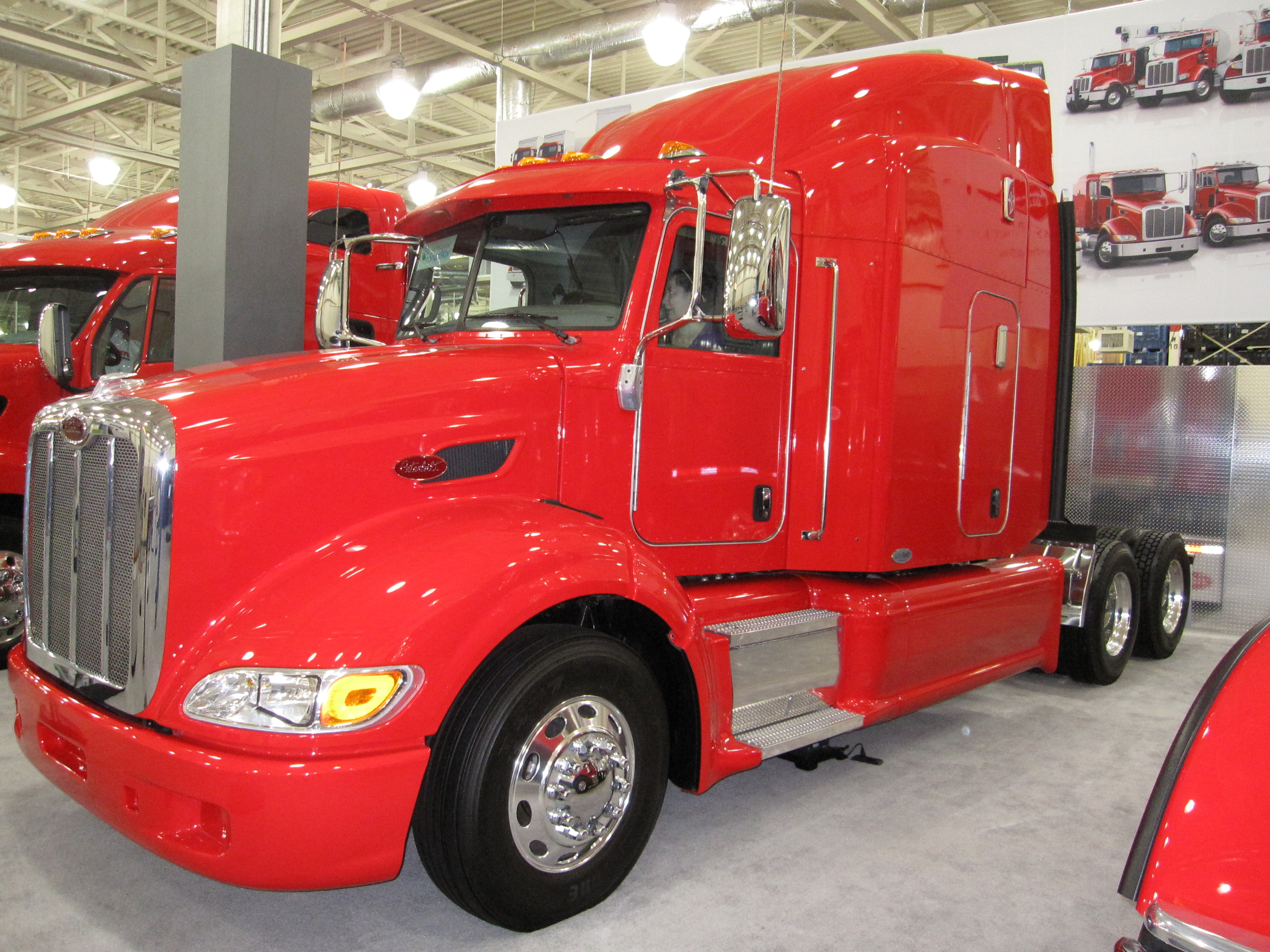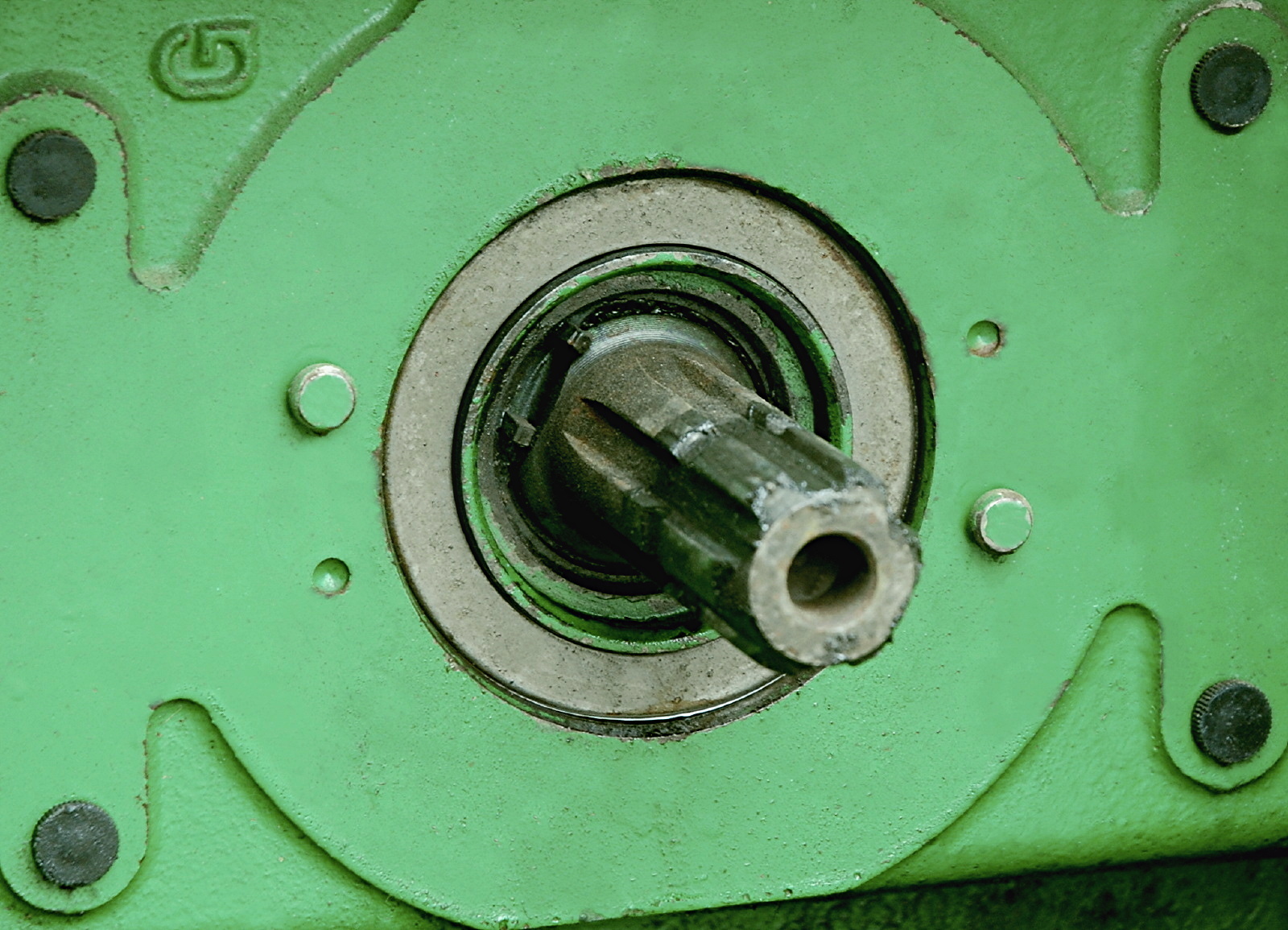|
Sidelifter
A sidelifter is a specialised vehicle or semi-trailer used to hoist and transport International Organization for Standardization, ISO standard intermodal containers over longer distances. Overview The sidelifter loads and unloads containers via a pair of Hydraulic machinery, hydraulic powered crane (machine), cranes mounted at each end of the vehicle chassis. The cranes are designed to lift containers from the ground, from other vehicles including rolling stock, from railway wagons and directly from stacks on docks or aboard container ships. A standard sidelifter is also able to stack a container at a two containers' height on the ground. If the sidelifter chassis is of 40' length or more, the cranes of the sidelifter can be shifted hydraulically along the sidelifter chassis to be able to pick up either one 20', one 40', or two 20' ISO containers at a time. As the Sidelifter is suitable for travelling on general roads for large distances and able to quickly load and unload without ... [...More Info...] [...Related Items...] OR: [Wikipedia] [Google] [Baidu] |
Steelbro
Steelbro Group is a heavy vehicle and crane manufacturer headquartered in Christchurch, New Zealand. In 2013 it owned the Steelbro, Transtank, Fuelgear and Freightquip businesses.Steelbro to close NZ plant ''World Cargo News'' 5 December 2013 History Steelbro was founded in 1878 by brothers Joseph and David Steel and originally named the Steel Bros Canterbury Coach Factory in Lincoln Road, . At this time the settlement of was less than 30 years old. The company initially manufactured horse drawn |
Semi-trailer
A semi-trailer is a trailer (vehicle), trailer without a front axle. The combination of a semi-trailer and a tractor truck is called a ''semi-trailer truck'' (also known simply as a "semi-trailer", "tractor trailer", or "semi" in the United States). A large proportion of a semi-trailer's weight is supported by a tractor unit, or a detachable front-axle assembly known as a dolly (trailer), dolly, or the B-Train, tail of another trailer. The semi-trailer's weight is semi-supported (half-supported) by its own wheels, at the rear of the semi-trailer. A semi-trailer is normally equipped with landing gear (legs which can be lowered) to support it when it is uncoupled. Many semi-trailers have wheels that are capable of being totally dismounted and are also relocatable (repositionable) to better distribute load to bearing wheel weight factors. Semi-trailers are more popular for transport than Trailer (vehicle)#Full, full trailers, which have both front and rear axles. Ease of backing i ... [...More Info...] [...Related Items...] OR: [Wikipedia] [Google] [Baidu] |
Corner Casting
A twistlock or twist lock, together with matching corner castings, as defined in norms including ISO 1161:1984, form a standardized (rotating) connector system, for connecting and securing intermodal, and predominantly ISO-standard international shipping containers. The primary uses are to securely ''stack'' containers, for locking them into place on a container ship, semi-trailer or rail carriage, and for lifting and handling by specific container-handling equipment, like straddle carriers, reach stackers, container-handling forklifts, sidelifters, and various types of container cranes. Twist-locks also have to be used when stacking containers shorter than together with 40foot and longer containers. Containers shorter than 40feet containers must be joined together horizontally with twist-locks, to form a rigid combined whole 40feet in length, to make them stackable and be able to support and be supported by an ISO standard 40- or 45foot container stacked underneath or ... [...More Info...] [...Related Items...] OR: [Wikipedia] [Google] [Baidu] |
Intermodal Container
An intermodal container, often called a shipping container, or a freight container, (or simply "container") is a large metal crate designed and built for intermodal freight transport, meaning these containers can be used across different Mode of transport, modes of transport – such as from container ship, ships to Rail transport, trains to Semi-trailer truck, trucks – without unloading and reloading their cargo. Intermodal containers are primarily used to store and transport materials and products efficiently and securely in the global containerization, containerized intermodal freight transport system, but smaller numbers are in regional use as well. It is like a boxcar that does not have wheels. Based on size alone, up to 95% of intermodal containers comply with ISO standards, and can officially be called ISO containers. These containers are known by many names: cargo container, sea container, ocean container, container van or sea van, sea can or C can, or MILVAN, or SEAVA ... [...More Info...] [...Related Items...] OR: [Wikipedia] [Google] [Baidu] |
Crane (machine)
A crane is a machine used to move materials both vertically and horizontally, utilizing a system of a boom, hoist, wire ropes or chains, and sheaves for lifting and relocating heavy objects within the swing of its boom. The device uses one or more simple machines, such as the lever and pulley, to create mechanical advantage to do its work. Cranes are commonly employed in transportation for the loading and unloading of freight, in construction for the movement of materials, and in manufacturing for the assembling of heavy equipment. The first known crane machine was the shaduf, a water-lifting device that was invented in ancient Mesopotamia (modern Iraq) and then appeared in ancient Egyptian technology. Construction cranes later appeared in ancient Greece, where they were powered by men or animals (such as donkeys), and used for the construction of buildings. Larger cranes were later developed in the Roman Empire, employing the use of human treadwheels, permitting the ... [...More Info...] [...Related Items...] OR: [Wikipedia] [Google] [Baidu] |
Internal-combustion Engine
An internal combustion engine (ICE or IC engine) is a heat engine in which the combustion of a fuel occurs with an oxidizer (usually air) in a combustion chamber that is an integral part of the working fluid flow circuit. In an internal combustion engine, the expansion of the high-temperature and high-pressure gases produced by combustion applies direct force to some component of the engine. The force is typically applied to pistons (piston engine), turbine blades (gas turbine), a rotor (Wankel engine), or a nozzle (jet engine). This force moves the component over a distance. This process transforms chemical energy into kinetic energy which is used to propel, move or power whatever the engine is attached to. The first commercially successful internal combustion engines were invented in the mid-19th century. The first modern internal combustion engine, the Otto engine, was designed in 1876 by the German engineer Nicolaus Otto. The term ''internal combustion engine'' usually r ... [...More Info...] [...Related Items...] OR: [Wikipedia] [Google] [Baidu] |
Hydraulic Motor
A hydraulic motor is a mechanical actuator that converts hydraulic pressure and flow into torque and angular displacement (rotation). The hydraulic motor is the rotary counterpart of the hydraulic cylinder as a linear actuator. Most broadly, the category of devices called hydraulic motors has sometimes included those that run on hydropower (namely, water engines and water motors) but in today's terminology the name usually refers more specifically to motors that use hydraulic fluid as part of closed hydraulic circuits in modern hydraulic machinery. Conceptually, a hydraulic motor should be interchangeable with a hydraulic pump because it performs the opposite function – similar to the way a DC electric motor is theoretically interchangeable with a DC electrical generator. However, many hydraulic pumps cannot be used as hydraulic motors because they cannot be backdriven. Also, a hydraulic motor is usually designed for working pressure at both sides of the motor, whereas m ... [...More Info...] [...Related Items...] OR: [Wikipedia] [Google] [Baidu] |
Trailer (vehicle)
A trailer is an unpowered vehicle Towing, towed by a powered vehicle. It is commonly used for the transport of goods and materials. There are two general categories of trailers: the full trailer and the semitrailer. A full trailer is a type of trailer whose entire weight is supported by its own wheels, with no weight transferred to the towing vehicle. In contrast, a semi-trailer is designed so that a portion of its weight is carried by its own wheels, while the remaining weight is borne by the towing vehicle. Sometimes recreational vehicles, travel trailers, or mobile homes with limited living facilities where people can camp or stay have been referred to as trailers. In earlier days, many such vehicles were towable trailers. Trailers have been used for thousands of years, predating the invention of the automobile. Before the advent of the wheel, early humans employed the concept of trailering by using drag sleds to transport goods. While the two wheel war chariot is one of the ... [...More Info...] [...Related Items...] OR: [Wikipedia] [Google] [Baidu] |
Diesel Engine
The diesel engine, named after the German engineer Rudolf Diesel, is an internal combustion engine in which Combustion, ignition of diesel fuel is caused by the elevated temperature of the air in the cylinder due to Mechanics, mechanical Compression (physics), compression; thus, the diesel engine is called a compression-ignition engine (CI engine). This contrasts with engines using spark plug-ignition of the air-fuel mixture, such as a petrol engine (gasoline engine) or a gas engine (using a gaseous fuel like natural gas or liquefied petroleum gas). Introduction Diesel engines work by compressing only air, or air combined with residual combustion gases from the exhaust (known as exhaust gas recirculation, "EGR"). Air is inducted into the chamber during the intake stroke, and compressed during the compression stroke. This increases air temperature inside the Cylinder (engine), cylinder so that atomised diesel fuel injected into the combustion chamber ignites. The torque a dies ... [...More Info...] [...Related Items...] OR: [Wikipedia] [Google] [Baidu] |
Tractor Unit
A tractor unit, also known as a truck unit, lorry unit, power unit, prime mover, ten-wheeler, semi-tractor, semi-truck, semi-lorry, tractor cab, truck cab, lorry cab, big rig tractor, big rig truck or big rig lorry or simply a tractor, truck, lorry, semi, big rig or rig, is a characteristically heavy-duty towing engine that provides motive power for hauling a towed or trailered load. The largest such vehicles are similar to locomotives. These fall into two categories: heavy- and medium-duty military and commercial rear-wheel-drive semi-tractors used for hauling semi-trailers, and very heavy-duty typically off-road-capable, often 6×6, military and commercial tractor units, including ballast tractors. It should not be confused with a tractor-trailer which is a combination of a tractor unit and semi-trailer, whereas a ''tractor unit'' describes only the tractor portion. Overview Tractor units typically have large-displacement diesel engines for power, durability, an ... [...More Info...] [...Related Items...] OR: [Wikipedia] [Google] [Baidu] |
Power Take Off
A power take-off or power takeoff (PTO) is one of several methods for taking power from a power source, such as a running engine, and transmitting it to an application such as an attached implement or separate machine. Most commonly, it is a splined drive shaft installed on a tractor or truck allowing implements with mating fittings to be powered directly by the engine. Semi-permanently mounted power take-offs can also be found on industrial and marine engines. These applications typically use a drive shaft and bolted joint to transmit power to a secondary implement or accessory. In the case of a marine application, such as shafts may be used to power fire pumps. In aircraft applications, such an accessory drive may be used in conjunction with a constant speed drive. Jet aircraft have four types of PTO units: internal gearbox, external gearbox, radial drive shaft, and bleed air, which are used to power engine accessories. In some cases, aircraft power take-off systems also pro ... [...More Info...] [...Related Items...] OR: [Wikipedia] [Google] [Baidu] |








